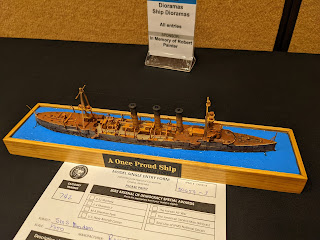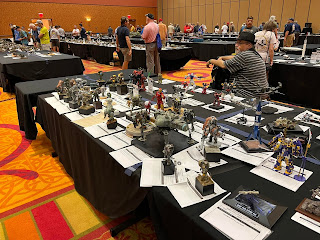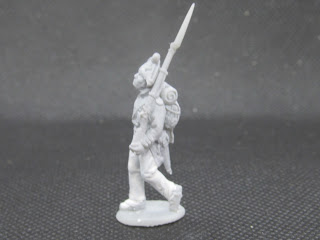Great video about two iconic rifles used during the Boer. I recommend his series on British firearms.
15mm, 20mm and 28mm miniature. Modeling vehicles and aircraft 3d printing of building and miniatures
Yom Kippour War
- 0200 hrs
- 3 d printing fixes and tips
- 3d printing
- 3d printing fixes and tips
- 40k
- a
- Advance Squad Leader
- Advance Squad Leader & Squad Leader
- aircraft
- Analogue Challenge
- Aussie in Vietnam
- Aussies in Vietnam
- Australians in Vietnam
- Barkskins French and Indian wars
- Baron's War
- Battle of the Bulge
- Battletech
- Blog reviews
- blood eagle
- Bolt Action
- British
- Bushido
- casting resin
- CDS IDF variant rules
- CFR formula f1 racing
- Chain of Command
- Civil war
- Close action Naval battles
- Cold War era
- colonial miniatures
- Cons
- crescent root
- cresent root
- Cry havoc
- CY6 air combat
- D&D
- Daisho
- dungeon saga
- DVG warfighter series
- Easy Eight battleground rules
- f
- Fat Dragon
- Fins
- For sale items
- french EE
- g
- German
- GMT Panzer
- GMT solo Uboat game series
- Grosse Pointe Library WW2 series
- Grosse Pointe Library WW2 series by David Lamb
- IDF
- Impetus
- In her Majesty Name
- IPMS
- Ironclads
- Italians
- japanese
- leipzig
- Lion Rampant
- Lock & Load
- Mack my Scottish terrier
- Mail surprises
- Men who would be kings
- Model companies.
- modeling tips
- Muskets & Tomahwaks
- my good friends
- napoleonic
- Neulandia
- Night fighter Ace
- Normandy
- old school tactical
- Operation Claymore.
- p
- Painting tips.
- pathfinder
- Perry Brothers
- Pike mans Lament
- Pike mans Lament/ ECW
- Plastic Soldier Company
- Romans
- russian
- Saga
- Samurai
- sea battles
- Sharp Practice
- Sharps Practice
- sherman tank
- Six Day war 1967
- Solatire games
- SpecOps
- SPQR.
- Star Trek
- Star Wars
- Star Wars legion
- sword point rules
- ta
- tank charts
- USA
- valor & Victory
- Vassal
- Vietnam
- Vikings
- VSF
- weapons
- WW2
- WW2. Zevzda
- X-wing
- Y
- Yom Kippour
Saturday, July 30, 2022
Friday, July 29, 2022
Video walk through of Historicon Vendors room
I know this will make my good friend Anton cry.
Video of the IPMS national in Omaha
Pull up your chair. Grab your favorite beverage and enjoy.
Thursday, July 28, 2022
Video recap of Histricon 2022
Another year that I missed Histricon. Times running out for me. The youth is gone and old age is taking its toll on me. SO foe your enjoyment here is the video
Tuesday, July 26, 2022
IPMS Omaha national winners slide show
Here is a link to a slide show of the winner. The order of place is third , second and first place. This means the third photo is the class winner.
 |
| Best of show. Scratch build model |
Monday, July 25, 2022
Sunday, July 24, 2022
Flash back to 1977 Traveller the role play game.
Traveller was a very good roleplaying game for outer space. I had purchase almost all of these books. But alas I couldn't get anyone in my group interested back in the late 70's
Traveller is a science fiction role-playing game first published in 1977 by Game Designers' Workshop. Marc Miller designed Traveller with help from Frank Chadwick, John Harshman, and Loren Wiseman.[1] Editions were published for GURPS, d20, and other role-playing game systems. From its origin and in the currently published systems, the game relied upon six-sided dice for random elements. Traveller has been featured in a few novels and at least two video games.
Omaha 2022 IPMS ships
Here is a selection of the ships. A lot of awesome builds.
The first group of pictures of Aircraft Carriers model where build by one person to show the progression of USN Carriers over the year.
Saturday, July 23, 2022
Photos from the IPMS nationals at Omaha Nebraska.
I got a large number of photo to post here, except the aircraft photo. Those photo will be on my other blog. 2022 IPMS aircraft photo here
The figure and miniature category
IPMS 2022 nationals.
I have a lot of photos to post later.
Here is a line to some. https://kitbash.net/Nats2022/
Paino Napoleonic Bavarians October release
Lucas Luber from Bavaria said this.
Wednesday, July 13, 2022
Saturday, July 9, 2022
Hesse-Darmstadt uniforms and organization
Notes on the uniforms the Hesse-Darmstadt contingent wore (1806-1813) according to Knoetel and the histories of the German regiments.
Since 1803 the Hessian infantry had been composed of three brigades, each made up of three battalions. The first two battalions were called musketeers and the third, riflemen; the musketeers wore blue uniforms and the riflemen green. Otherwise the dress was common to all the brigades, which were differentiated from each other by the special, distinctive color of the lapels, of the collar, the cuffs, the shoulder straps. That color was red for the brigade of the guard, light blue for that of the landgrave, and yellow for that of the hereditary prince.
The uniform was decorated with many rosettes of white braid (silver for the officers), seven on each side of the lapels and two below; three on the cuffs, two on the pocket straps, two on the waist buttons. The turned back coattails were red for the three brigades, held back by a little strap of a distinctive color. Not much of a white vest was showing. White trousers and high black leggings with brass buttons. Hat in the Prussian style, trimmed with white lace and decorated with red and white puffs and a spherical pompon of the company's color. Knapsack hung from a strap passing over the right shoulder, in the Prussian style; white leather kit, black giberne, ornamented with a round brass plaque with the heraldic lion of Darmstadt.
The Hessian infantry was outfitted thus when it took part in the campaign of 1806-7 against Prussia and Sweden: wartime experience brought many modifications. First of all, the hair was no longer queued, as it had been up to then; the two battalions of riflemen having been charged during the Battle of Jena by French hussars who took them for Prussians because of their hats trimmed with white lace, that white edging was done away with and the officers were given high red feathers, black at their upper end. From then on the officers wore silver epaulets on the French model and, in campaign uniform, blue trousers in boots a la Souvaroff; the knapsack of the troops was attached with two straps as in the French army; the pompon took the form of a little feather in the companyþs color; the soldier's hat was decorated with the national cockade, up to then carried only by officers; finally, the bayonets were provided with scabbards.
In 1808 the officers stopped wearing the belt buckled around the waist; their swords were attached to a bandoleer passed over the right shoulder. For marching the troops were furnished with long blue pantaloons and short black leggings.
When the Hereditary Prince Regiment left for Spain it was organized like the French regiments into two battalions of six companies, of which one was grenadiers, the other voltigeurs; consequently it had to incorporate into its two battalions of blue-uniformed musketeers its battalion of green-uniformed riflemen. Until the use of the green uniforms became standard in all the companies the motley aspect produced an effect which was hardly satisfactory. It discontented Marshal Lefebvre when he reviewed the two Hessian battalions in Orleans on their way to Spain. Moreover, the green uniform soon disappeared from all the Darmstadt troops and the riflemen donned the blue uniform of the infantry; the musketeers and the riflemen were distinguished by the ornament of their retroussis, a white grenade for the first and a hunting horn for the second.
In Spain the uniform underwent many modifications which made it similar to that of the French troops: the shako replaced the hat, it being provided with a heart-shaped white metal plaque decorated with the heraldic lion of Darmstadt; the grenadiers donned the red feathers, the red cord on the shako, and the red-fringed epaulets of the French grenadiers; the voltigeurs the green feathers and cord, with yellow-green epaulets; the central companies, or riflemen, had black feathers, a white cord on the shako; they retained the shoulder straps but these were blue, of the basic color of the uniform, edged with yellow, the regiment's color. The revers were no longer used except in the dress uniform and the rosettes of braid disappeared except on the revers; finally, the leggings were cut a la Hungary and decorated with a yellow border. The white trousers gave way to blue and, for marching, blue pantaloons, or maroon, cloth of that last color being very common in Spain. The officers had a blue uniform with a single row of buttons; as insignia of the service they wore a silver neckpiece with a golden lion of Darmstadt, and they retained the hat until 1814.
The other two Hessian infantry regiments stayed in Germany (the regiment of the guard and that of the corps) and kept their three battalions, of which one was riflemen, each battalion containing four companies; they all kept the white rosettes of their uniforms, replacing the shoulder straps by blue counter epaulets, edged in the proper color. They had neither grenadiers nor voltigeurs; the companies were differentiated by the color of the pompon, the crest uniformly red but the base white for the first company, black for the second, blue for the third, and red for the fourth.
In the second battalion the upper part of the spherical base of the pompon was white, the lower part yellow for the first company, black for the second, blue for the third, and red for the fourth.
The tassel of the saber had the same color as the base of the pompon.
The shako without cord was adopted for the two regiments when in 1809 war broke out with Austria; only a small number of these new headpieces could be issued to the troops before the end of the campaign; when the guard made its solemn entry into Darmstadt on January 21, 1810, its battalions were formed into five companies `of which the last wore the shako'.
This is the uniform in which the Hessian regiments of the guard and the corps fought valiantly in our ranks in 1809 and 1812, and in 1813 up to the Battle of Leipzig.
The regiment of light horse raised in 1790 by the landgrave of Hesse was given a green uniform, a red cape decorated with black stripes, with black lapels and cuffs; rosettes of white braid on the stripes of the cape and the revers enhanced the uniform; on the cuffs and under the buttons of the waist were three rows of white braid in the shape of V; red lining, black collar, yellow trousers and English style helmet; green schabraque with black border edged in white, with white initials in the rear corners; kit of tawny leather.
The helmet had brass metallic parts for the troops, silvered metal for officers; decorated with black chenille and the initial L of the sovereign, it has a black feather for horsemen, black with a red base for officers, red with a black base for trumpeters, these latter had lapels edged with white braid but no rosettes.
In 1809 the head gear was similar to the chenille helmet of the Bavarians ; the uniform was shortened, the kit became black, the trousers green with red piping, the schabraque had a border of black braid between white braids. The Hessian light horse also wore the gray pantaloons called Charivari, buttoned on the sides up to the waist, and red shoulder straps with white braid; the officers had silver epaulets.
The regiment fought honorably before Graudenz and Stralsund in 1807, then gloriously at Essling and Wagram in 1809; finally, it shined in this uniform at the Beresina in 1812 before being very nearly totally destroyed in 1813 at Juterbogk.
After 1803 the Hessian artillery wore deep blue coats and trousers with a black collar, lapels, and cuffs, piped in red; the same rosettes of white braid as the infantry, shoulder straps of the base color of the uniform with red piping, white buttons, black leggings with red braid and brass buttons. The hat, replaced in 1808 by the shako without cord, with trimmings of white metal (visor, heart-shaped badge) and a red pompon topped by black feathers; white kit.
The half-battery sent to Spain in 1808 had received the red cord on their shakos and Marshal Lefebvre armed all the cannoneers with infantry rifles. The officers' rosettes were of silver braid, their epaulets silver in the French style, their sashes mixed red silk and silver (the national colors of Darmstadt), their black hats had black feathers with a red base.
The Hessian artillery distinguished itself in all the great battles in Spain, at Medellin (where the booty taken from the Spaniards was black or brown pantaloons), at Talavera, at Almonacid, at Ocana, before being made prisoners by the English when the latter took Badajoz.
New Project Wurttemberg Army
Has anybody here contemplated a Wurttemberg army?
I've been working on this army for the last 6-7 months and finally finished. Very satisfying project to do. I'm a bit over Napoleonics for while, though.
This really first started several years ago when I picked up a couple of Wurttemberg units from Newline Designs. Then they got rid of the range and I couldn't add to it. Then Front Rank came out with their range a couple of years ago. I bought enough for 4 more battalions and finished two (yellow facings) then lost interest. I revived it once I saw that Front Rank had finished the range.
The idea was to have enough for a stand alone force with enough variety to keep it interesting.
Totals are:
8 Battalions of Line infantry
2 Light battalions
2 Jaeger battalions
2 Chevauxleger regiments
2 Horse Jaeger regiments
1 Hussar regiment
2 6lb foot batteries (2 guns each)
1 12lb foot battery
1 6lb horse battery
includes all skirmishers and command
Flags are mostly Flags of War. A couple of Maverick Models flags as well.
Bases are 'magbases' from Shogun Miniatures.
I have the 3d stl files for this army.
Monday, July 4, 2022
Hessian Darmstadt early Napoleonic troops
These are from the Kickstarter set by Piano Miniatures. The figures are amazing. The close up photos are not the best.. Hope you like the prints. Reference to the Hessian Darmstadt uniforms and list of the army make up. Hessian -Nassau



















































